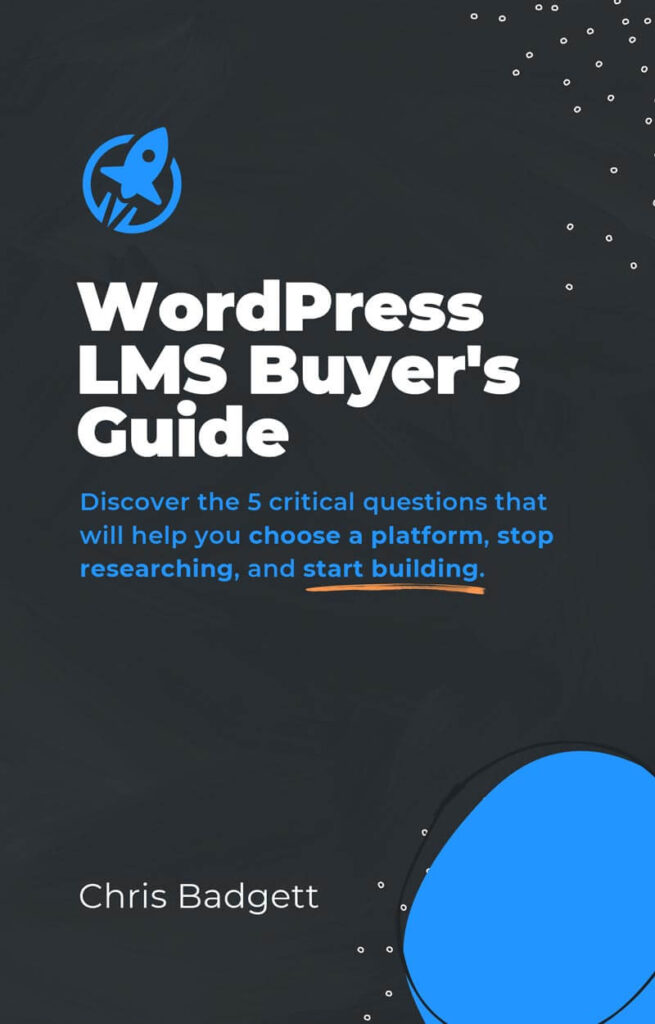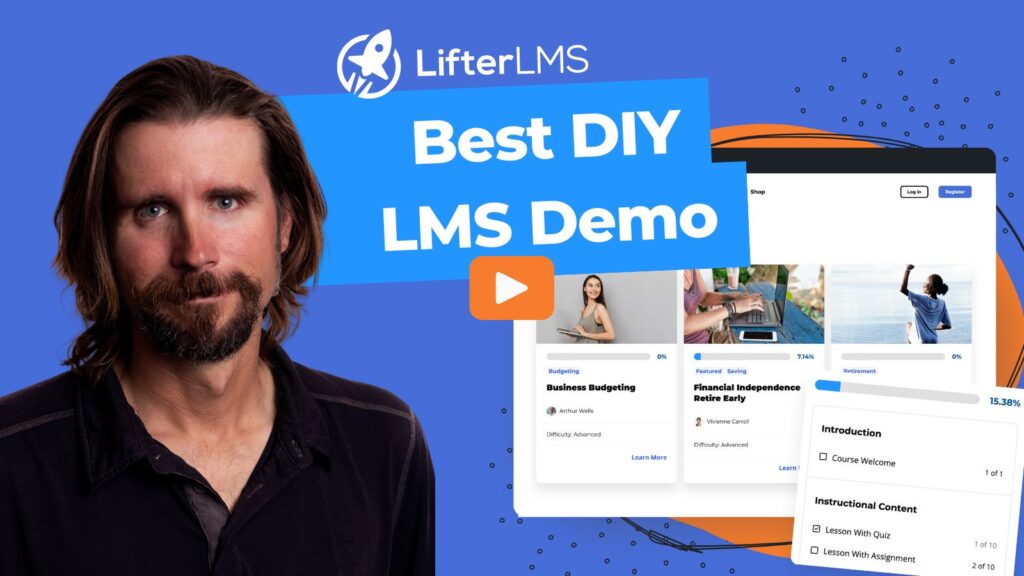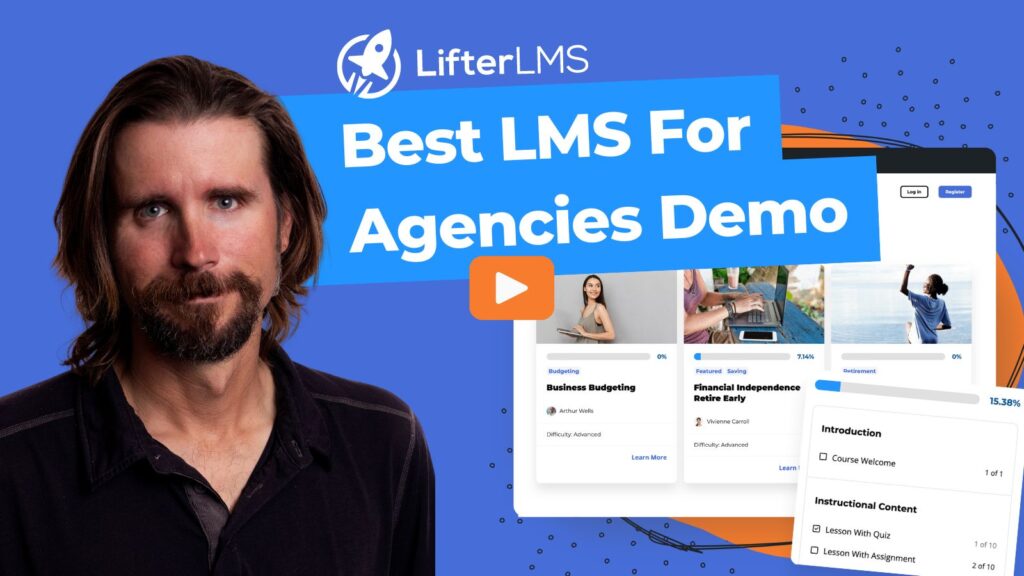Make Your LifterLMS Course Portals Speed Optimized
Faster loading websites convert more sales. If your professional WordPress site takes longer than 3 seconds to load, this course is for you!

Jon Phillips, Holy Grail WP
Success Story Highlights
2 courses easily set up: a free mini course along with a premium course
1 Month to launch.
2 new LifterLMS-based courses in planning.
Well, you have to know these things when you’re a king, you know.” – King Arthur, Monty Python and the Holy Grail
It’s not only kings who need to know things, as King Arthur says in the comedy movie Monty Python and the Holy Grail–this of course applies to all professions, and one of those things any seasoned web developer has to know is the importance of optimized website performance. Website performance has a huge impact on visitor experience, traffic, effectiveness, SEO, and even brand perception.
A big part of the performance is speed metrics, and many web professional has at times struggled to reduce loading times and avoid the possibility that visitors and potential customers might leave the site. If a site’s critical content does not load quickly enough, visitors will not be able to access its content, losing customer engagement and possibly even confidence in its brand.

“It’s been a really freeing experience because I can choose what I want to do. It’s also been a learning experience because I have to actually now engage as a marketer to try to get my name out there as being somebody who is passionate about this type of business and wanting to help them.”
—Jon Phillips, Holy Grail WP
However, it can be a challenge to learn and understand the various factors that affect speed, and what exactly to do to improve those metrics.
The Holy Grail of Speed Metrics
Jon Phillips was in this very position when he hit upon a combination of solutions that made a site he was working on load under a second… anywhere in the world. A fan of Monty Python, he felt as though he had found his own “holy grail,” which inspired the name of his course at holygrailwp.com, where he shares his knowledge with others.
Jon currently offers a free mini course, as well as a deep-dive called the HolyGrail WordPress Site Speed Course, both utilizing LifterLMS and WordPress. The mini course covers resources that one can implement for free to optimize site speed, such as switching name servers to Cloudflare, and knowing how to pre-load assets like images and fonts.
For those willing to go beyond the free options Jon covers in his mini-course, the paid course offers even more granular lessons around improving WordPress site speed and performance using premium tools.
Jon shared some key points that are among the many topics included in both courses.
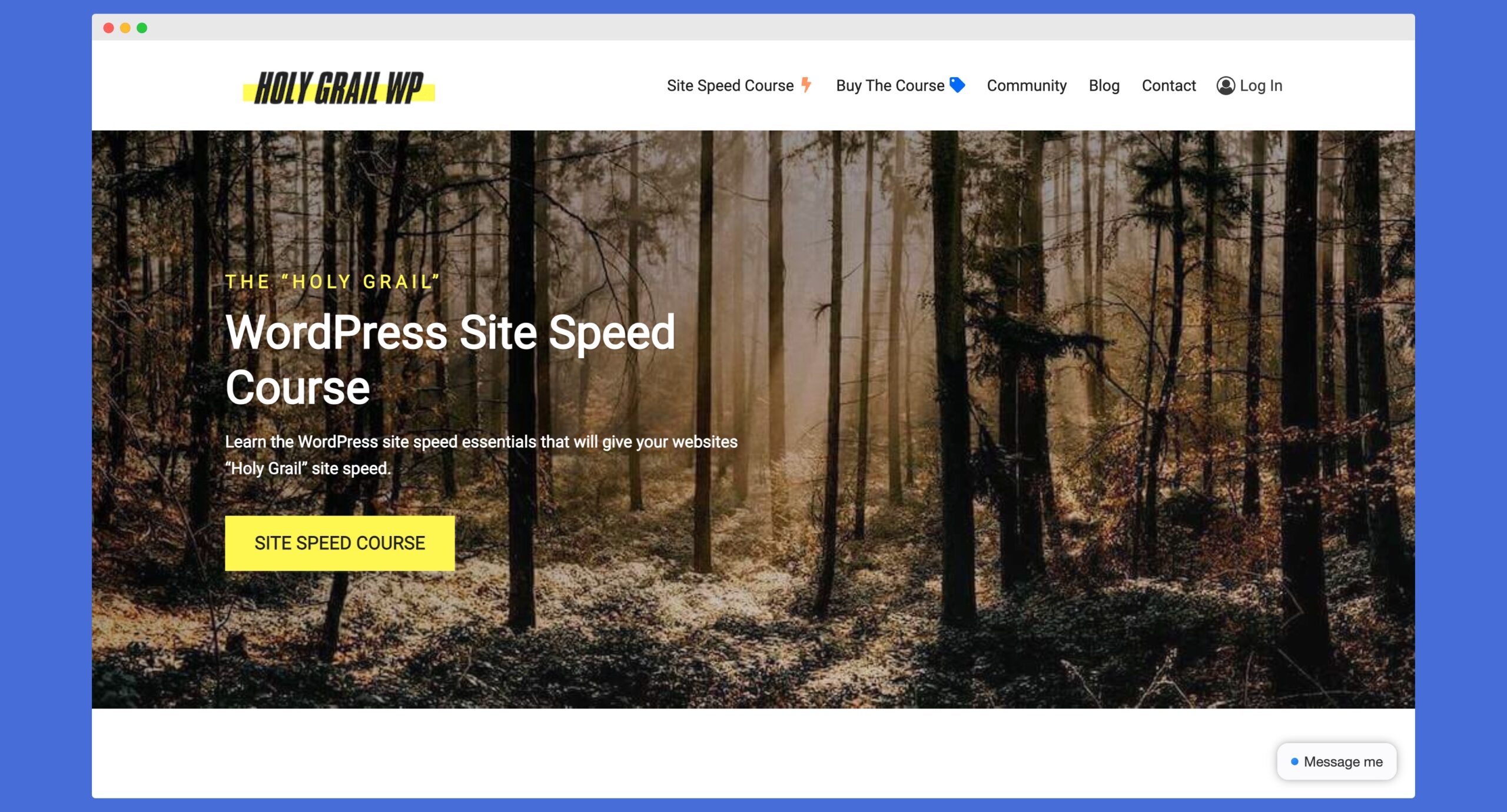
Image Optimizing
Images and other media can slow a site down significantly, making an image optimizing plugin critical. Most image optimizer plugins have a free limited tier, with payment options for more uploads. Those offering a CDN are even better, as a CDN can resize images on the fly, and provides an image fallback, serving the image format appropriate for any age browser. Jon is a fan of EWWW, but also mentions ShortPixel as a favorite in the WordPress community.
Quality Hosting
Web hosting can have a significant effect on site speed, but quality hosting can mean a significant investment depending on the host of choice. Jon recommends taking a look at GridPane as a favorite of his but also mentions Kinsta as a top-tiered managed host, and SiteGround for shared hosting.
The Effect of Themes on Speed
Your choice of theme can affect website speed. Jon has run some speed tests on popular WordPress themes, and notes that GeneratePress and Kadence are examples of very lightweight themes.
The addition of a page builder will, of course, result in more requests, as will other types of additional functionality like third-party plugins, animations, and interactivity. Such features require additional CSS and javascript files, all of which will slow down a site. Running tests and seeing what is loading and where can help a web developer make an informed decision about what they can afford in their performance “budget.”
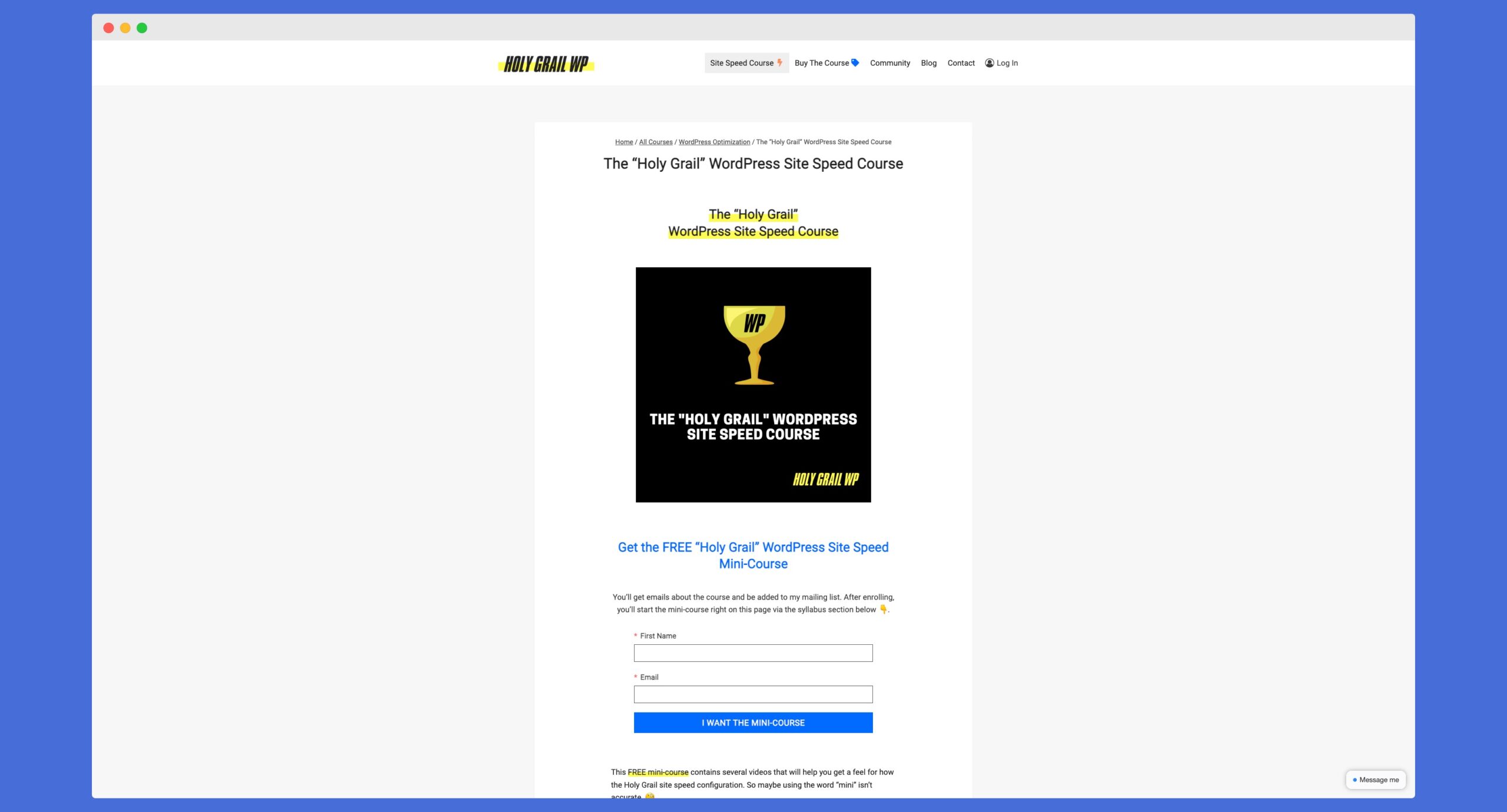
Caching and Asset Optimization
One of the first things many of us think of when we consider website speed is caching. Caching can be applied at the server level, including via Cloudflare, or with a plugin, or both, for a multi-layered approach. One of the free lessons in the HolyGrail mini-course addresses caching on CloudFlare’s edge network, which encompasses some 200 plus different server locations around the world, ensuring fast site loading for anybody in just about any place in the world. Another option is site-level caching available from some web hosts, like SiteGround’s SG Optimizer.
For those interested in a premium caching plugin, the most popular one by far is WPRocket, a premium plugin, although Jon notes that FlyingPress is gaining considerable traction. Both plugins offer CSS and javascript optimization as well as caching. Optimization delays unneeded scripts until their functionality is required, helping to serve faster page loads.
Jon cautions that caching will not be much help on dynamic pages, such as e-commerce, membership, or pages that require log-ins, as their interactivity requires that the pages rebuild with each visit.
How Jon Makes It Work With LifterLMS
As someone who loves teaching, Jon felt inspired to share the site speed “holy grail” he had found, so for guidance he turned to Elizabeth Goddard’s Fast Guide to Launching, and learned how to launch his course in a month. He already knew about LifterLMS, and that it supported integration with WPFusion and FluentCRM. In addition to those marketing automation and customer relationship management apps, Jon uses WooCommerce for payment, and Uncanny Automator to simplify student enrollment and on-boarding.
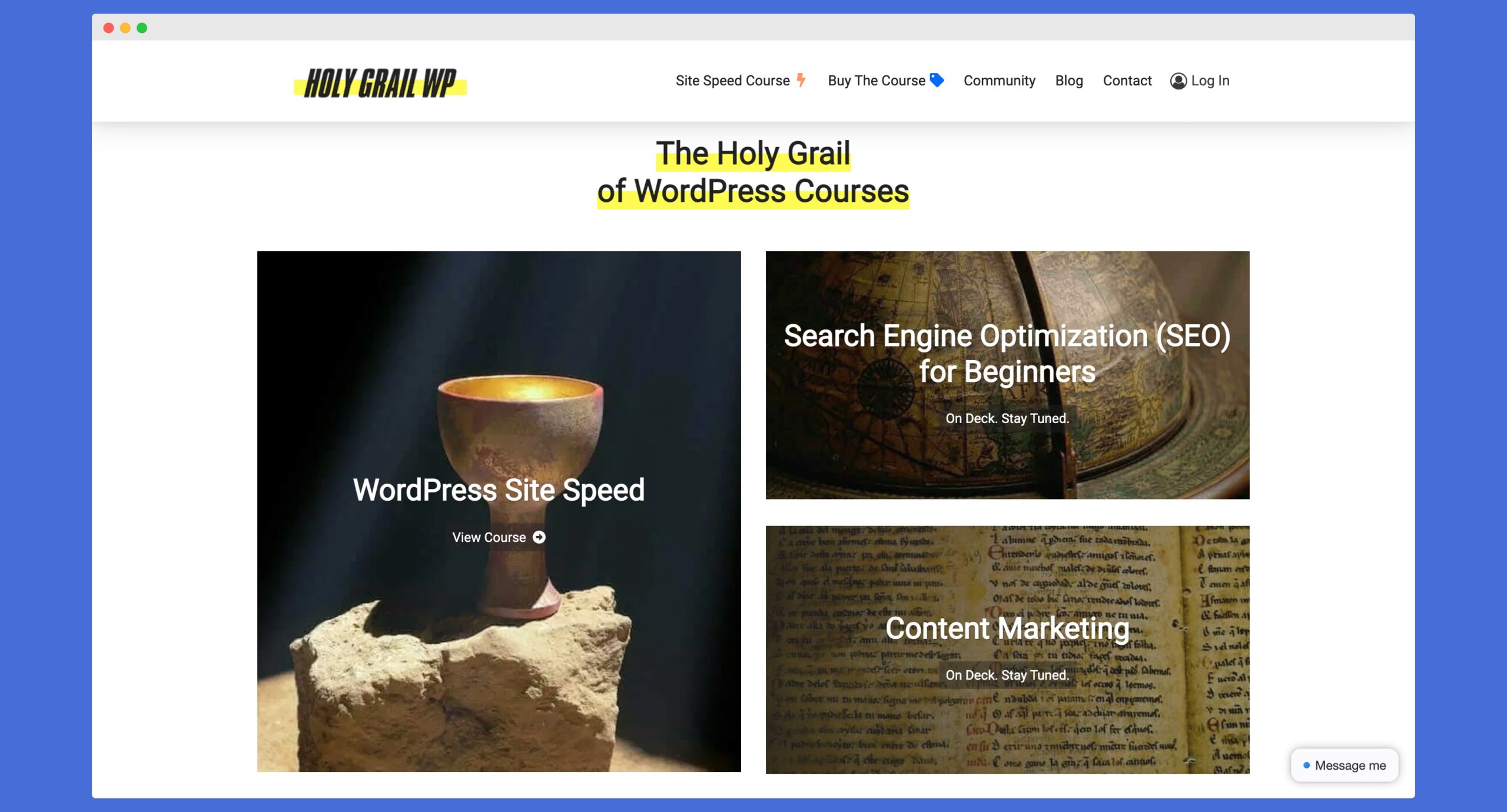
“I like how open ended Lifter is, because you can basically make it do what you want it to do. I like that open-endedness.”
As an example of LifterLMS’ easy integration and “open-endedness,” Jon points to video inclusion. While LifterLMS allows a user to link to their own private YouTube or Vimeo videos, Jon chooses to embed his own video player using Presto Player.
With all the flexibility LifterLMS offers, Jon is working on new courses to share his holy grails on on-page SEO and content marketing–find out when they launch at HolyGrailWP.
Jon’s Tech Stack
- WordPress
- LifterLMS
- WooCommerce
- Kadence (theme)
- GridPane (host)
- Uncanny Automator
- Fluent Forms
- Presto Player (video integration)
- Fluent CRM
- WP Fusion
“I took [LifterLMS] for a trial spin, and just thought, ‘Hey, I think this will work. This is going to be the thing.‘
I didn’t even try any other WordPress-based options just because I found everything out of the box integrating pretty well with what I needed it to do.”
Here is a video from Jon Phillips’s youtube channel to help you understand what is teaching style is like-
We have published a podcast episode with Jon Phillips on LMScast. You can learn a lot more in detail about website speed optimization from this podcast-


